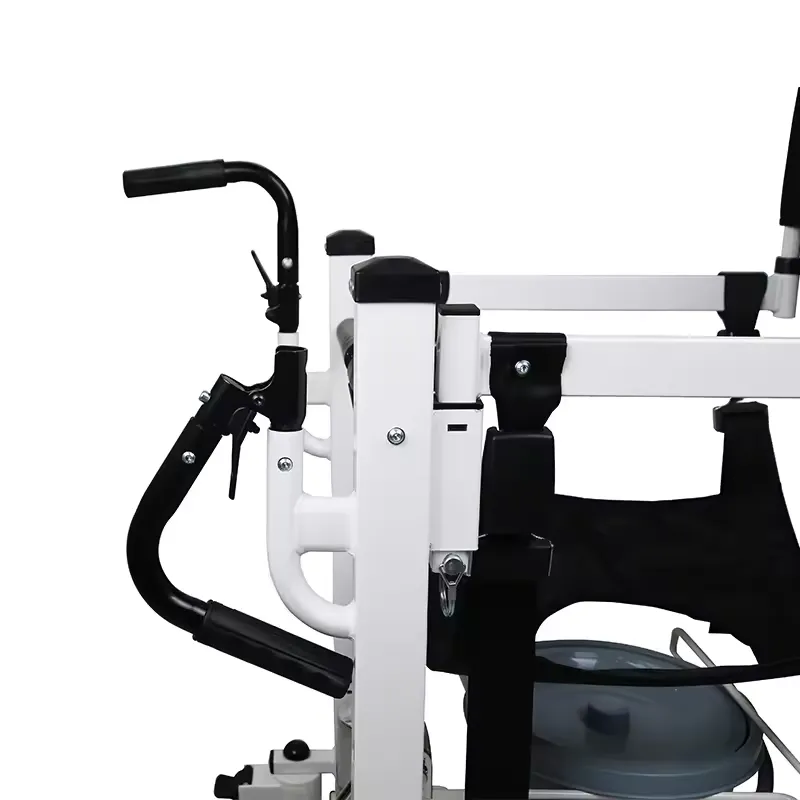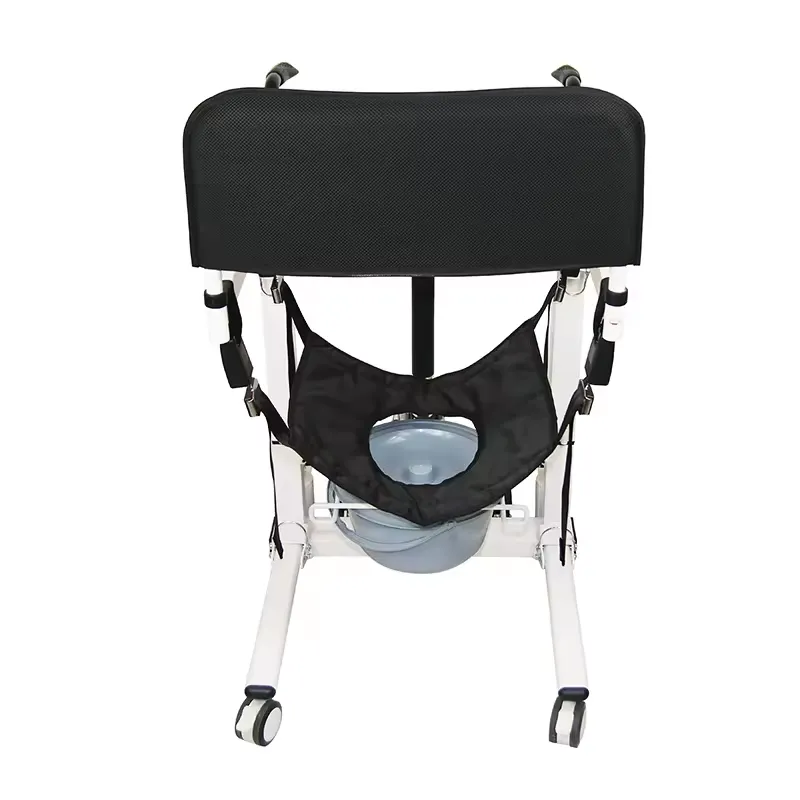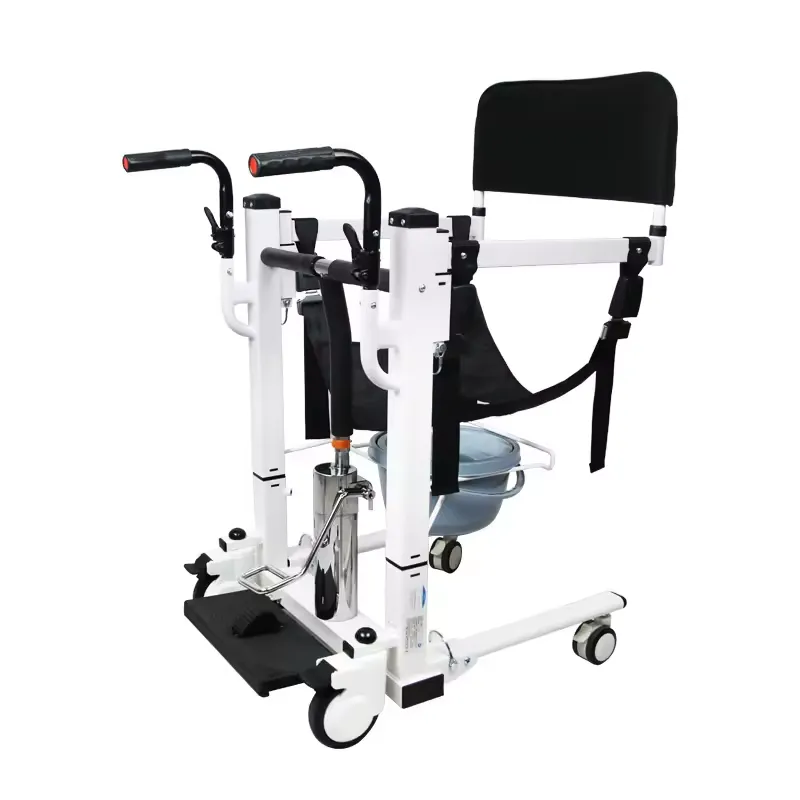When caring for individuals with limited mobility, those recovering from surgery, or elderly individuals with disabilities, the process of "transferring" becomes particularly crucial. As a result, the use of patient lift transfer chairs has increased significantly, gradually expanding beyond hospitals into nursing homes, community settings, and even ordinary homes.
The patient lift transfer chair not only solves the problem of "difficult transport," but also serves as a crucial tool for ensuring patient safety, quality of care, and the health of caregivers. However, this presents a challenge: with so many brands and varying features available on the market, how can consumers choose the right one?
This article will provide a professional perspective on "How to Choose a Good Patient Lift Transfer Chair," analyzing multiple dimensions, including structure, safety, adaptability, usage scenarios, user experience, and standard certifications.

What is a patient lift transfer chair?
A patient lift transfer chair is a nursing device with a lifting function that facilitates patient mobility. It is primarily used to assist patients who cannot walk independently in moving smoothly and safely between beds, toilets, wheelchairs, and bathrooms.
It integrates multiple modular functions, including a lifting mechanism, locking brake system, seat belt system, toilet-compatible structure, and footrest, making it a relatively comprehensive piece of modern nursing equipment.
What are the key criteria for selecting a patient lift transfer chair?
Choosing a "good" patient lift transfer chair isn't solely determined by price or brand. It's a rational choice based on a comprehensive consideration of the patient's condition, the care environment, and the device's performance. The following are key evaluation criteria:
1. Lift Range and Method: Is it suitable for the application scenario?
The lifting capacity of a patient lift transfer chair is its most core function. It is mainly categorized as follows:
· Hydraulic lift: Lifting is achieved through manual pump pressure, with a stable structure and a reasonable price.
· Electric lift: Lifting is achieved through a battery-powered motor, which is easy to operate but requires careful charging.
· Pneumatic lift: Less common and suitable for specific medical settings.
Evaluation Criteria:
· Whether the lifting height range can connect to a bed/toilet/bath chair (commonly 30cm–65cm);
· Is the operation convenient for one person;
· Is there a risk of jamming or malfunction?
2. Load Capacity: Can it support the patient's weight?
Load capacity requirements vary significantly among different populations:
Patient Size | Recommended Maximum Weight |
| Normal Adult | ≥120kg |
| Obese | ≥150–200kg |
| Child/Small | 80–100kg |
A patient lift transfer chair must have a load capacity that is 10%–20% greater than the user's body weight to ensure long-term safe use.
3. Chair Structure and Material: Durability, corrosion resistance, and rust resistance are essential
A high-quality patient lift transfer chair must be made of corrosion-resistant, rust-resistant, and pressure-resistant materials:
· Main Frame Material: Aluminum alloy, stainless steel, or carbon steel with spray-coated plastic;
· Seat Material: Waterproof cushion, artificial leather, or medical PVC;
· Caster Material: Medical-grade silent wheels with brakes for anti-slip function.
Tip: For bathroom use, be sure to choose a lift transfer chair with corrosion-resistant aluminum alloy or stainless steel construction.
4. Transfer Method: Can it be moved smoothly horizontally or vertically?
A good patient lift transfer chair should meet multi-directional transfer requirements, namely:
· Lateral docking with a bed (sideways movement);
· Longitudinal docking with a toilet or bathing area;
· Rollable into and out of hallways, corridors, and hallways.
The wheel's directional stability, locking mechanism, and turning radius must be carefully examined.
5. Safety Features: Can it prevent the patient from slipping?
Patient stability during transfer is a key consideration when purchasing a patient lift transfer chair. It should include:
· Adjustable safety belt;
· Fixable armrests;
· Shoulder/lumbar support;
· Anti-slip seat/footrest;
· Four-wheel brakes;
· Anti-tilt side wings.
6. Commode Compatibility: Does it have a toileting function?
For patients with moderate to severe disabilities, a patient lift transfer chair with a toileting function is crucial:
· Removable or hollow seat cushion;
· Compatible with a bedpan or toilet;
· Easy-to-clean and antibacterial surface.
This type of design directly impacts the frequency and difficulty of daily care.

Classification by Usage Scenario: What Type of Lift Transfer Chair Does a Patient Need?
Different groups have varying levels of reliance on and functional requirements for patient lift transfer chairs:
Target audiences | Recommended Types | Features and Requirements |
| Completely paralyzed individuals | Electric / Multi-function | Precise lifting and lowering, secure safety belt |
| Elderly bedridden individuals | Commode / Folding | Convenient and suitable for family use |
| Postoperative patients in recovery period | Lightweight Push-to-Go | Flexible operation and easy transfer between departments and areas |
| Obeseous individuals | Reinforced Heavy-Duty | Load capacity ≥ 200kg, stable structure |
| Home care | Foldable Portable | Stowable for easy storage and operation |

Patient Lift Transfer Chair: What Should You Consider When Purchasing?
When choosing a patient lift transfer chair, be sure to consider brand certification, after-sales service, and quality inspection standards:
1. Choose a reputable, reputable brand and seller
· Check if the product has passed the ISO 13485 medical device quality system certification;
· Check if the product has FDA (US) or CE (Europe) registration certification;
· Check if the product is registered with the National Medical Products Administration (for the Chinese market).
2. Check if the product meets medical device grade requirements
· Check if the surface is antimicrobial treated;
· Check if the product has electrical safety certification (for electric models);
· Check if the product has undergone drop, pressure, and corrosion tests.
3. Check if the after-sales service and parts replacement mechanism are robust
· Check if the product offers a 1–3 year warranty;
· Check if parts repair or replacement is available;
· Check if customer service is available to provide installation and usage instructions.
Common Misconceptions: Don't Overlook Core Needs Because of "High Price" or "Multi-Function" Features
When choosing a patient lift transfer chair, consumers often fall into the following misconceptions:
Misconception 1: The More Functions, the Better
→ Too many functions can make a chair complex and difficult to operate, especially for the elderly or caregivers.
Misconception 2: Choosing the Most Expensive is the Best
→ A high-priced patient lift transfer chair doesn't necessarily mean it's suitable; the decision should be made based on the specific use case.
Misconception 3: Ignoring Size and Space Compatibility
→ Some patient lift transfer chairs are too large to fit through bathrooms or doorways; measurements should be taken in advance.
Misconception 4: Ignoring Weight Capacity and Height Compatibility
→ A mismatch between the patient's weight and height can cause inconvenience or safety risks.
Summary table of professional purchase suggestions for patient lift transfer chair
Evaluation Dimensions | Recommended Standards |
| Lifting Method | Electric is superior to hydraulic and offers greater ease of operation |
| Lifting Height | Supports at least 35cm–65cm, facilitating bed-toilet connection |
| Load Capacity | For weights ≥ 120kg, a minimum weight of 15% or more is generally recommended |
| Safety Features | Safety belts, footrests, wheel locks, and anti-tilt mechanisms are essential |
| Material Structure | Aluminum alloy/stainless steel are preferred for corrosion and rust resistance |
| Toilet Function | Hollow seat cushions and bedpans are available for convenient toileting for disabled patients |
| Certifications | ISO/CE/FDA certifications and production records are available |
| Suitable Space | Ensure access through interior doors and corners, and consider storage space |
| After-Sales Guarantee | Warranty, parts availability, and operating instructions are provided |
How long has your company been manufacturing medical equipment?
Established in 2009, Dayang Medical has more than 15 years of industry experience. We own two R&D and manufacturing facilities and serve as a trusted supplier for rehabilitation and mobility equipment. Our certifications include ISO9001, ISO13485, CE, FDA, and TUV.
Whether you're looking to buy in bulk or require customized solutions, we are ready to offer factory-direct pricing, fast delivery, and quote support tailored to your procurement goals.










